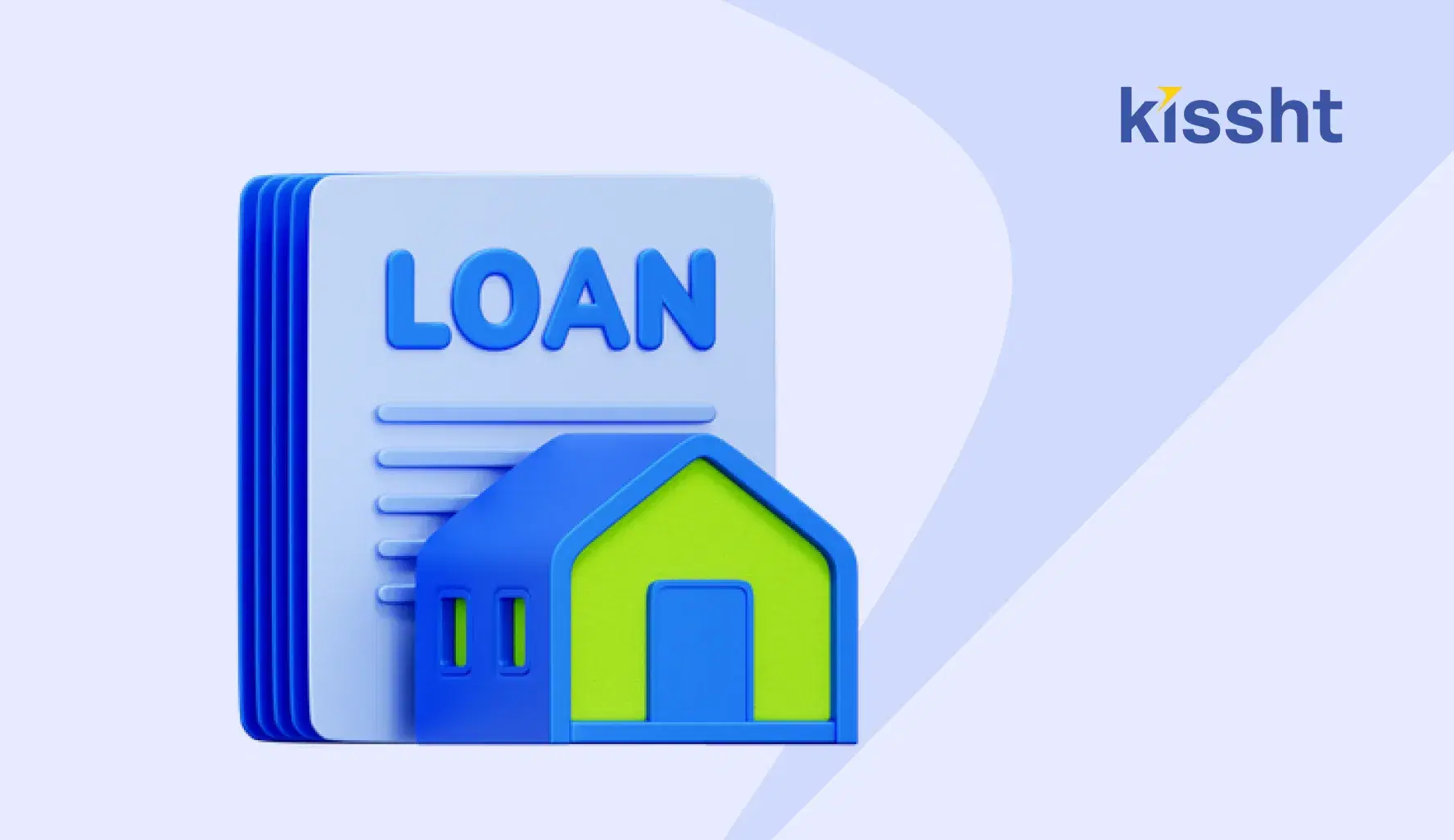Home Loan vs Loan Against Property: Which Should You Choose?

Financial decisions shape the way we buy homes, build businesses, or handle emergencies. Among the many credit options available, home loans and loans against property are two of the most widely used choices. Both allow you to borrow large sums with the security of property, but their purposes, benefits, and repayment structures differ.
If you have ever wondered about the difference between mortgage and home loan or debated the pros and cons of mortgage loan vs home loan, this article will help you make sense of it all.
What is a Home Loan?
A home loan is a type of secured loan designed exclusively for purchasing or constructing a residential property. Banks and financial institutions lend money for buying ready-to-move-in houses, under-construction projects, or even plots of land where you plan to build a house.
The amount of loan is repaid in monthly installments over a fixed tenure, which may stretch up to 30 years. Since the purpose is residential, the property itself serves as collateral until the repayment is complete.
What is LAP?
Before diving deeper, let us clarify what is LAP. LAP stands for Loan Against Property. It is a type of secured loan where you put up your residential, commercial, or even industrial property as collateral to borrow funds. Unlike a home loan, the borrowed money can be used for multiple purposes, such as business expansion, medical expenses, education, or even consolidating debt.
The flexibility of usage makes LAP a preferred choice for those who already own property and want to leverage its value without selling it.
Home Loan vs Loan Against Property: Key Differences
Although both options involve property as security, their differences are crucial when making borrowing decisions. Below is a detailed look at home loan vs loan against property:
1. Purpose of the Loan
-
Home Loan: Exclusively for buying or constructing a house.
-
Loan Against Property: Can be used for almost any purpose, including business, education, or emergencies.
2. Loan Amount
The loan amount depends on the property’s value and the borrower’s eligibility.
-
Home loans typically finance up to 80 to 90 percent of the property value.
-
LAP usually allows borrowing up to 60 to 70 percent of the pledged property’s value.
3. Tenure
-
Home loans offer longer repayment tenures, often up to 30 years.
-
LAP usually comes with shorter tenures, typically 10 to 15 years.
4. Interest Rates
Since home loans are designed for residential purposes, the rates tend to be lower in comparison to LAP. Loan against property rates are slightly higher due to the flexibility of usage.
5. Tax Benefits
-
Home loans provide tax deductions on both principal repayment and interest paid under the Income Tax Act.
-
LAP does not offer tax benefits unless the loan is used for business purposes.
These distinctions explain the mortgage loan vs home loan debate, showing that while both involve property as collateral, their usage and advantages differ significantly.
Advantages of Home Loan
-
Lower rates compared to other types of secured loans.
-
Long repayment tenure reduces monthly financial burden.
-
Tax benefits on principal and interest payments.
-
Encourages disciplined savings as EMI payments become part of monthly budgeting.
Advantages of Loan Against Property
-
Flexibility to use funds for any purpose, from business growth to personal emergencies.
-
Higher amount of loan compared to personal loans or unsecured credit.
-
Continued ownership of property while leveraging its value.
-
Quicker processing through an online loan app, making it accessible even in urgent situations.
When Should You Choose a Home Loan?
Opt for a home loan if your goal is to buy or construct a residential property. The lower interest rates and long repayment periods make it affordable, while the tax benefits add financial relief.
When Should You Choose a Loan Against Property?
Select LAP if you already own property and need significant funds for non-residential purposes. Whether it is to expand your business, pay for higher education abroad, or handle medical bills, LAP offers flexibility.
This is especially useful for self-employed entrepreneurs or individuals who require large amounts of capital. For them, a trusted best loan provider can help structure the repayment in a manageable way.
Understanding Mortgage Loan vs Home Loan
A common confusion arises between the terms “mortgage loan” and “home loan.” A mortgage loan is a broad category where property is pledged as collateral to borrow money. In that sense, both home loans and loans against property fall under mortgage loans.
However, when people compare mortgage loan vs home loan, they usually refer to loans against property as mortgage loans. The essential distinction lies in the end-use of funds. Home loans are strictly for residential purposes, while mortgage loans or LAP can be used more flexibly.
Role of Online Loan Apps in Making Borrowing Easier
The digital shift in financial services has simplified the borrowing process. An online loan app allows borrowers to check eligibility, upload documents, and even track the status of their loan applications. Whether it is applying for a home loan or LAP, these apps reduce paperwork and save time, making credit more accessible to a wider audience.
Things to Consider Before Choosing
-
Purpose of Loan: Define whether your need is residential or multipurpose.
-
Repayment Capacity: Longer tenures reduce EMIs but increase overall interest outgo.
-
Interest Rates: Compare rates from the best loan provider to secure the most affordable option.
-
Property Type: Not all properties are eligible for LAP. For example, agricultural land is often excluded.
-
Future Commitments: Think about how the EMI will impact your other financial obligations.
Final Thoughts
Both home loans and loans against property serve important but distinct purposes. A home loan is ideal if you want to buy or construct your dream house with lower rates and tax benefits. On the other hand, a loan against property is suitable for large, flexible financial requirements without giving up ownership of your property.
Understanding the differences between mortgage loan vs home loan helps borrowers make informed decisions. Ultimately, the right choice is determined by your financial goal, repayment ability, and the type of property you own. With digital platforms and online loan apps, accessing these loans has become simpler, giving you the convenience to choose what fits your needs best.
FAQs
1. What is the main difference between a mortgage and home loan?
A home loan is taken specifically to buy or construct a house, while a mortgage loan or LAP can be used for multiple financial needs.
2. Can I get tax benefits on a loan against property?
Tax benefits are not available on LAP unless the borrowed money is used for business purposes.
3. Which is better: home loan vs loan against property?
It depends on your purpose. Choose a home loan for buying or building a house, and a loan against property for multipurpose financial needs.
4. How do I apply for these loans quickly?
You can go for an online loan app to apply for both home loans and LAP. These apps make the process faster and more transparent.
5. Who is the best loan provider for home loans or LAP?
The best loan provider depends on your eligibility, property type, interest rates, and repayment preferences. Always compare multiple lenders before choosing.

Instant Loans at Your Fingertips
Personal Loan
Fast, hassle-free loan for your personal needs.

Business Loan
Fuel your business growth with quick approvals.

Loan Against Property
Unlock your property’s value with ease.

Credit Pulse
Boost your credit score with smart insights.

Track your credit score
Simply enter your mobile number to get a quick overview of your credit score.
Check Now




